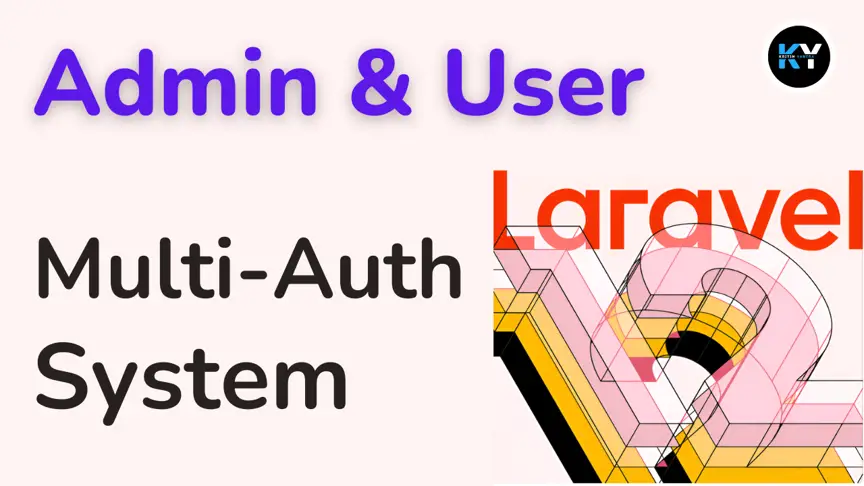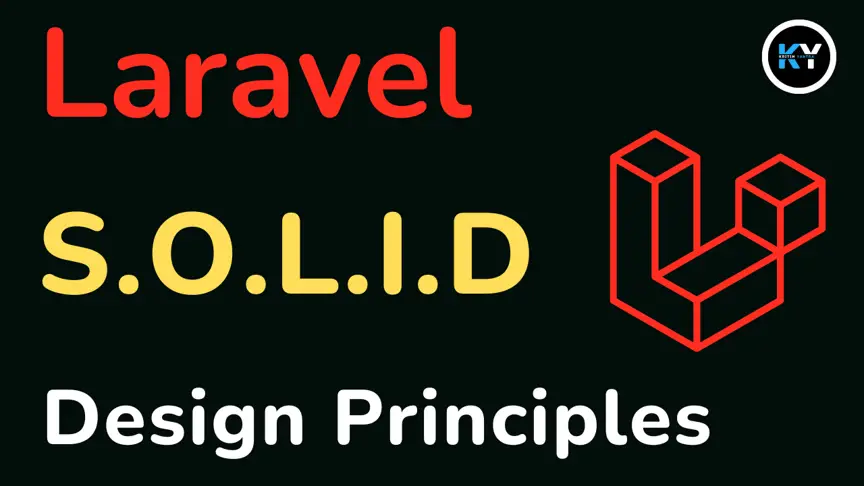Laravel 12 Roles and Permissions Setup: Complete Guide

Kritim Yantra
Feb 28, 2025

In many web applications, controlling user access based on roles and permissions is crucial. For example, an admin might need full access to all features, while a regular user might only have limited permissions. Laravel, a powerful PHP framework, provides an excellent foundation for implementing such access control mechanisms.
In this blog post, we’ll explore how to add roles and permissions to a Laravel 12 application using the popular Spatie Laravel Permission package. This package simplifies the management of roles and permissions, making it easy to integrate into your Laravel projects.
By the end of this guide, you’ll know how to:
- Install and configure the Spatie Laravel Permission package.
- Create roles and permissions.
- Assign roles and permissions to users.
- Check for roles and permissions in your application.
- Protect routes using middleware based on roles and permissions.
Prerequisites
- A Laravel 12 project set up.
- Composer installed.
- Basic knowledge of Laravel concepts like models, migrations, and middleware.
Step 1: Install the Spatie Laravel Permission Package
The first step is to install the Spatie Laravel Permission package via Composer. Run the following command in your terminal:
composer require spatie/laravel-permission This will download the package and its dependencies into your project.
Step 2: Configure the Package
After installation, you need to publish the package's migration files. These migrations will create the necessary tables for roles, permissions, and their relationships. Run the following command:
php artisan vendor:publish --provider="Spatie\Permission\PermissionServiceProvider"
This will copy the migration files to your database/migrations directory. Next, run the migrations to create the tables:
php artisan migrate
Additionally, add the HasRoles trait to your User model. Open app/Models/User.php and include the trait as shown below:
use Spatie\Permission\Traits\HasRoles;
class User extends Authenticatable
{
use HasApiTokens, HasFactory, Notifiable, HasRoles;
// ...
} Step 3: Create Roles and Permissions
Now that the package is set up, you can create roles and permissions. You can do this in various ways, such as through seeders, in your controllers, or via the console. For this example, we’ll use a seeder to create some roles and permissions.
First, create a new seeder:
php artisan make:seeder RolesAndPermissionsSeeder
Open the newly created seeder file in database/seeders/RolesAndPermissionsSeeder.php and add the following code:
use Illuminate\Database\Seeder;
use Spatie\Permission\Models\Role;
use Spatie\Permission\Models\Permission;
class RolesAndPermissionsSeeder extends Seeder
{
public function run()
{
// Create roles
$adminRole = Role::create(['name' => 'admin']);
$editorRole = Role::create(['name' => 'editor']);
$userRole = Role::create(['name' => 'user']);
// Create permissions
$createPostPermission = Permission::create(['name' => 'create post']);
$editPostPermission = Permission::create(['name' => 'edit post']);
$deletePostPermission = Permission::create(['name' => 'delete post']);
// Assign permissions to roles
$adminRole->givePermissionTo($createPostPermission);
$adminRole->givePermissionTo($editPostPermission);
$adminRole->givePermissionTo($deletePostPermission);
$editorRole->givePermissionTo($createPostPermission);
$editorRole->givePermissionTo($editPostPermission);
$userRole->givePermissionTo($createPostPermission);
}
}
This seeder creates three roles (admin, editor, user) and three permissions (create post, edit post, delete post). It then assigns specific permissions to each role.
To run the seeder, use the following command:
php artisan db:seed --class=RolesAndPermissionsSeeder Step 4: Assign Roles to Users
Once roles are created, you can assign them to users. For example, in your controller or during user registration, you can assign a role like this:
use App\Models\User;
use Spatie\Permission\Models\Role;
$user = User::find(1);
$role = Role::findByName('admin');
$user->assignRole($role); Alternatively, you can assign roles directly when creating a user:
$user = User::create([
'name' => 'Admin User',
'email' => 'admin@example.com',
'password' => bcrypt('password'),
]);
$user->assignRole('admin'); Step 5: Check for Roles and Permissions
In your application, you can check if a user has a specific role or permission. For example, in a controller:
if ($user->hasRole('admin')) {
// User is an admin
}
if ($user->hasPermissionTo('create post')) {
// User can create posts
} You can also use Blade directives in your views for conditional rendering:
@role('admin')
<p>You are an admin.</p>
@endrole
@permission('create post')
<button>Create Post</button>
@endpermission Step 6: Use Middleware to Protect Routes
Update bootstrap/app.php:
->withMiddleware(function (Middleware $middleware) {
$middleware->alias([
'role' => \Spatie\Permission\Middleware\RoleMiddleware::class,
'permission' => \Spatie\Permission\Middleware\PermissionMiddleware::class,
'role_or_permission' => \Spatie\Permission\Middleware\RoleOrPermissionMiddleware::class,
]);
})
Then, apply the middleware to your routes:
Route::group(['middleware' => ['role:admin']], function () {
Route::get('/admin', [AdminController::class, 'index']);
});
Route::group(['middleware' => ['permission:create post']], function () {
Route::get('/posts/create', [PostController::class, 'create']);
}); Conclusion
Adding roles and permissions to your Laravel 12 application is straightforward with the Spatie Laravel Permission package. By following these steps, you can manage access control efficiently, ensuring that users can only perform actions they are authorized to do.
Remember to test your roles and permissions thoroughly to ensure they work as expected. For more advanced features, such as assigning permissions directly to users or using gates and policies, refer to the official documentation.
With this setup, your Laravel 12 application will be well-equipped to handle user authorization securely and effectively!
Comments
Jexcel
May 09, 2025 03:20 PM
Kritim Yantra
May 30, 2025 09:18 AM
Please log in to post a comment:
Sign in with GoogleRelated Posts

 Kritim Yantra
Kritim Yantra


nishat islam
Oct 21, 2025 07:15 AM